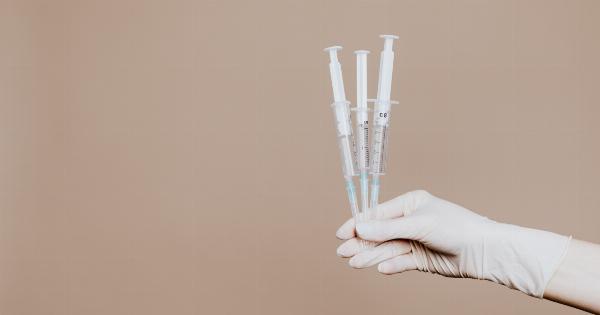Yeast infection (also known as candidiasis) is a common fungal infection that affects both men and women. It occurs when there is an overgrowth of the Candida fungus, which is naturally present in the body in small amounts.
While yeast infections can affect various parts of the body, the most common type occurs in the vagina. Here are five tell-tale signs that you may have a yeast infection:.
1. Vaginal Discharge
One of the most common symptoms of a yeast infection is vaginal discharge. The discharge is usually white or yellowish and may have a cottage cheese-like consistency. It may also have a strong or unpleasant odor.
In some cases, the discharge may be watery or thin. Some women may only experience a small amount of discharge, while others may have more significant amounts.
2. Itching
Another common symptom of a yeast infection is itching around the vagina or vulva. The itching may be severe and may interfere with daily activities such as sleep or work.
Itching may also be accompanied by redness and inflammation of the vulva or vagina.
3. Burning Sensation
Some women may experience a burning sensation during urination. This burning sensation may be accompanied by pain or discomfort in the genital area.
4. Pain During Intercourse
Women with yeast infections may experience pain during intercourse. This pain may be a burning or itching sensation or may be more severe. In some cases, the pain may be so severe that intercourse is impossible.
5. Rash
In some cases, a yeast infection may cause a rash in the genital area. The rash may be red and itchy and may be accompanied by small bumps or blisters.
How to Treat a Yeast Infection
If you suspect you have a yeast infection, it’s important to seek medical attention. Your doctor can diagnose a yeast infection through a physical exam and by taking a sample of the discharge for testing.
Yeast infections are usually treated with antifungal medications. These medications may be available over-the-counter or by prescription, depending on the severity of the infection.
Other ways to manage a yeast infection include avoiding tight-fitting clothing, wearing cotton underwear, and avoiding scented or perfumed products in the genital area.
Preventing Yeast Infections
There are some steps you can take to reduce your risk of developing a yeast infection. These include:.
- Wearing breathable clothing
- Avoiding douches and perfumed products in the genital area
- Using condoms during sex to reduce the risk of transferring infection
- Taking antibiotics only when necessary, as they can increase the risk of developing a yeast infection
- Eating a balanced diet that includes probiotics, such as yogurt
Conclusion
Yeast infections are a common fungal infection that can affect both men and women. Symptoms include vaginal discharge, itching, burning, pain during intercourse, and rash.
Treatment usually involves antifungal medications, while prevention strategies include wearing breathable clothing, avoiding perfumed products in the genital area, and eating a balanced diet that includes probiotics.






























